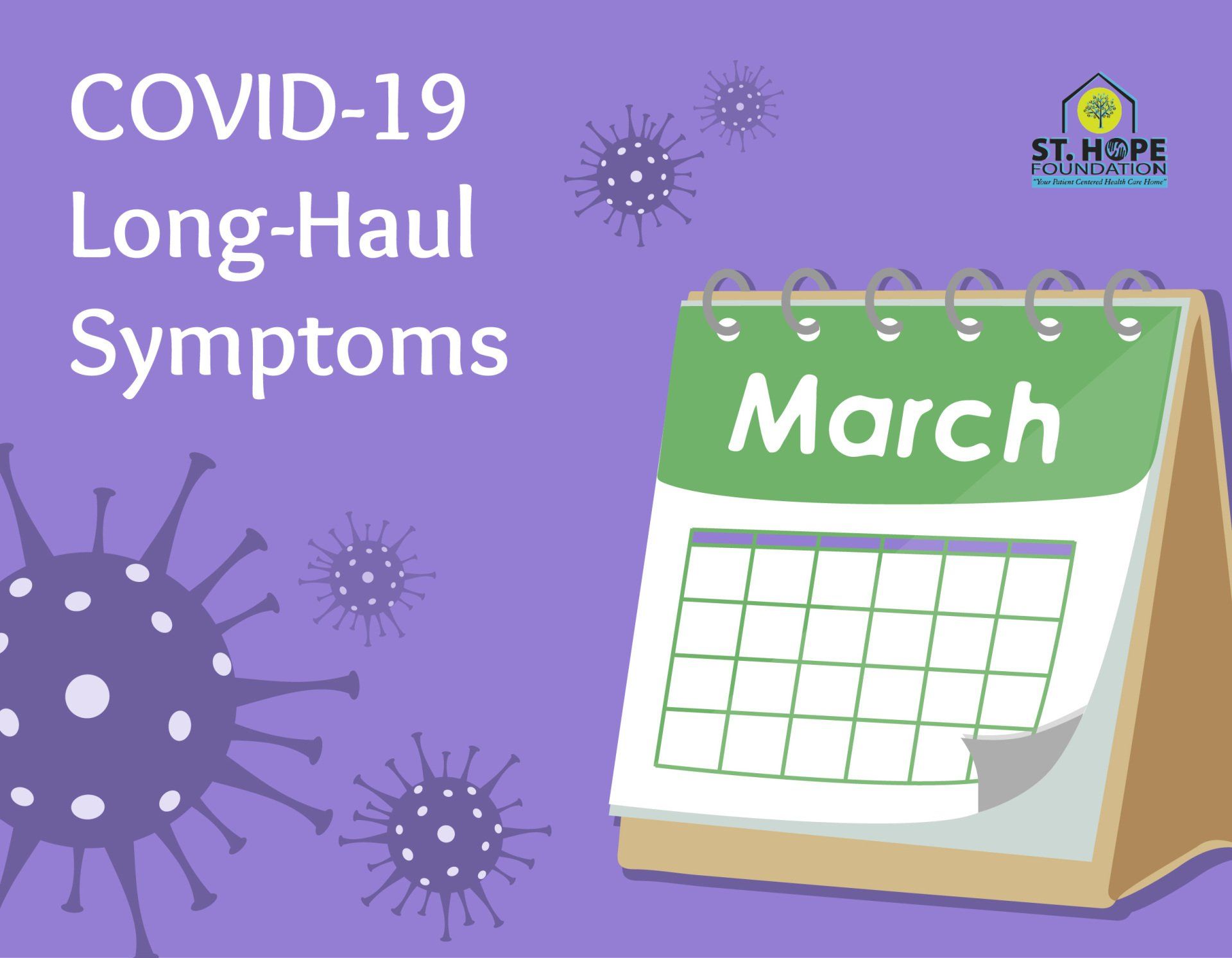Recent Posts
COVID-19 Long-Haul Symptoms

One of the frightening aspects of COVID-19 are its long-haul symptoms – those that linger for months or potentially even years after a person has mostly recovered and is no longer contagious. Shortness of breath when exercising or working, a lost or altered sense of taste or smell and fatigue are all reported long-haul symptoms of COVID-19.
Some estimates suggest as many as 33 percent of COVID-19 survivors are experiencing some long-haul symptoms.
Developing Treatments for Long-Haul Coronavirus Treatments Is a Work in Progress
Humans have been dealing with certain diseases and illnesses, like the flu or pneumonia, for hundreds and in some cases thousands of years. The treatment and management of those ailments are supported by thoroughly documented case studies, anecdotal evidence and definitive science.
It wasn’t until early 2020 that the World Health Organization identified SARS-CoV-2 as a new strain of coronavirus. Treatment protocols and symptom management strategies have only been around for a year, at the most.
There’s a lot of trial and error in medicine, and some of the initial treatment assumptions turned out to be misguided or ended up resulting in significant side effects.
The early emphasis on ventilators is an apt example of how the perceived efficacy of treatment options changes over time.
There’s No Simple Answer to the Ventilator Question
Evidence and data have clearly shown that many patients who go on ventilators either die or face long roads to recovery with significant long-haul symptoms. However, there are still some COVID-19 patients who require ventilators to survive.
Many countries grasping for effective ways to treat COVID-19 put in place dramatic measures to increase the supply of ventilators, only to discover mere months later that the need was overstated.
The longer patients are on ventilators the more likely they are to experience complications caused by ventilator-assisted breathing. Current prevailing medical wisdom is to delay ventilator use until it is the option of last resort. Experience and evidence show a patient who can survive oxygen deficiency without a ventilator will likely suffer fewer long-haul symptoms.
It’s important to recognize the reality of the often panic-inducing ventilator statistics. When people read that 80 percent of COVID-19 patients who go on ventilators die, or that 40 to 50 percent of all patients (including those without COVID-19) die after going on ventilation, they might assume it’s the ventilators that are dangerous.
Context matters in medical reporting. Patients who are suffering severe enough hypoxia (oxygen deficiency) to warrant placement on a ventilator are suffering extremely precarious medical emergencies.
In many cases, patients with those types of illnesses who don’t go on a ventilator will inevitably suffer fatal oxygen deficiency. It would be more honest to report that 40 to 50 percent of patients who would otherwise die from oxygen deficiency survive thanks to ventilators.
People who go on ventilators due to COVID-19 are more likely to
experience long-haul symptoms such as:
- Shortness of breath even after mild exertion (walking up a flight of stairs)
- Weakened diaphragm since the ventilator is doing the work of muscles that usually draw breath
- In some cases, acute lung injuries related to ventilator use (doctors must be precisely accurate when calculating how much air to push into a patient’s lungs)
- Increased infection risk
- As many as a quarter of patients develop post-traumatic stress disorder, and as many as half might develop depression
Long-Term Loss of Taste and Smell
A June 2020 study comprised of self-reported data from just under 8,500 COVID-19 patients found that 41 percent experienced a loss of their ability to smell. Another smaller-scale study in August 2020 found that 96 percent of tested patients exhibited at least some diminishment of olfactory senses, with 18 percent experiencing a total loss of smell.
Many of these patients reported a sudden loss rather than a gradual loss of smell. This led some doctors to use the loss of smell as a key COVID-19 diagnostic indicator. A July study found that 72 percent of COVID-19 patients regained their sense of smell and 84 percent regained their sense of taste within a month.
Millions of COVID-19 survivors worldwide still haven’t fully recovered their senses of taste and smell.
Some estimates suggest between five and 10 percent of COVID-19 patients may have these symptoms for six months or more.
More Serious Health Consequences
Medical understanding of COVID-19 is far from complete. Many doctors suspect some patients will have a long-term increased risk for life-threatening medical emergencies such as heart attacks, strokes and pulmonary embolisms.
Many people who have recovered from COVID-19 are still experiencing joint pain, headaches, fatigue and “brain fog” – essentially feeling not-all-there cognitively.
Listen to Your Doctors
COVID-19 patients experiencing long-haul symptoms should openly discuss their struggles with their doctors. Listen to what they advise. If your doctor recommends easing back into exercising, then you probably shouldn’t immediately resume your pre-COVID-19 workout regimen. If you’re still tired after getting more than enough sleep your doctor may recommend adopting better sleep hygiene.
Receiving compassionate care and faithfully following a recovery plan will likely be the most reliable way to fully recover from COVID-19. If you or a loved one are seeking friendly, compassionate physicians for COVID-19 help in the Houston area, schedule an appointment at a St. Hope Foundation office.
Call us at (713) 778-1300 to learn more.









